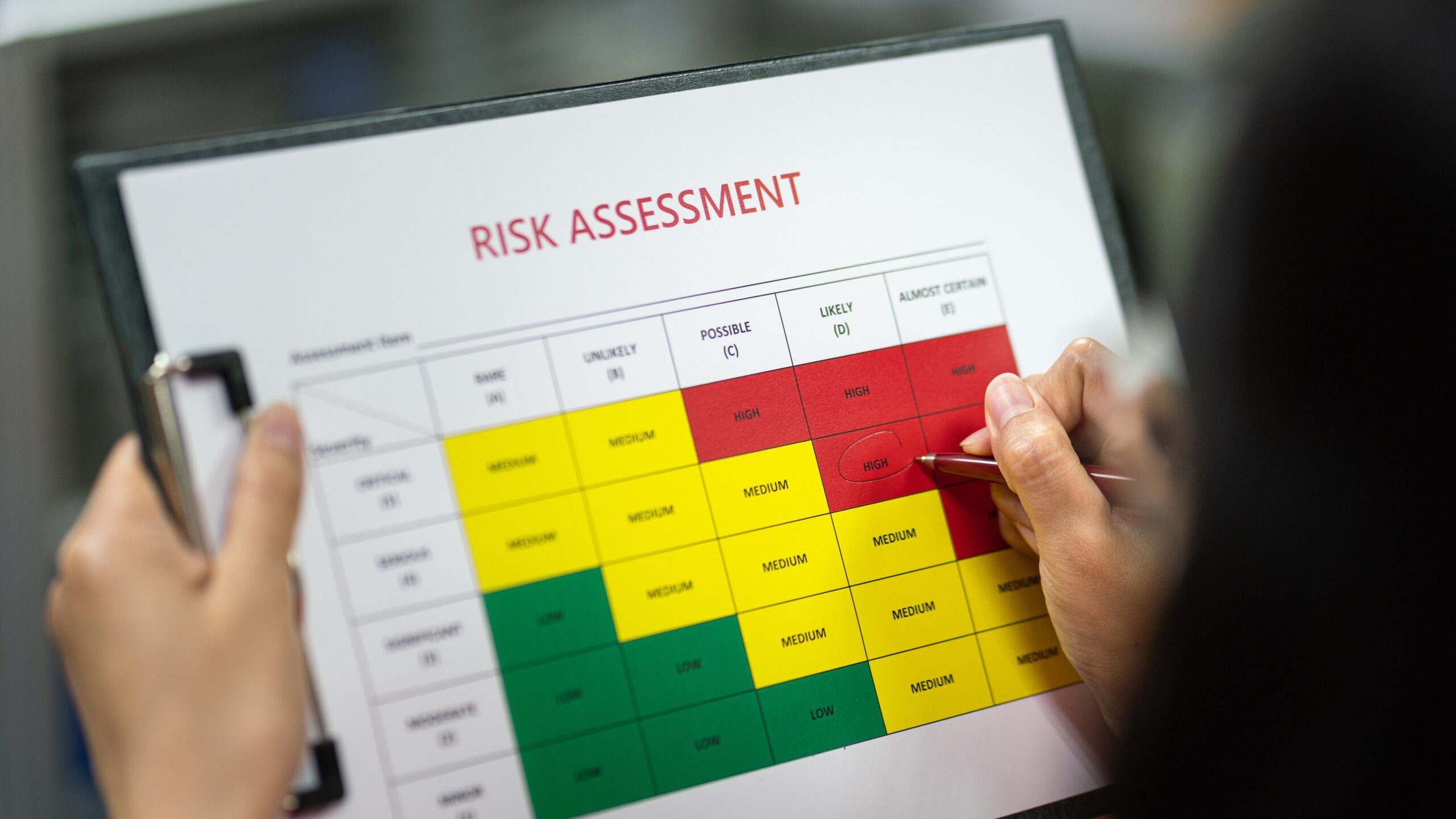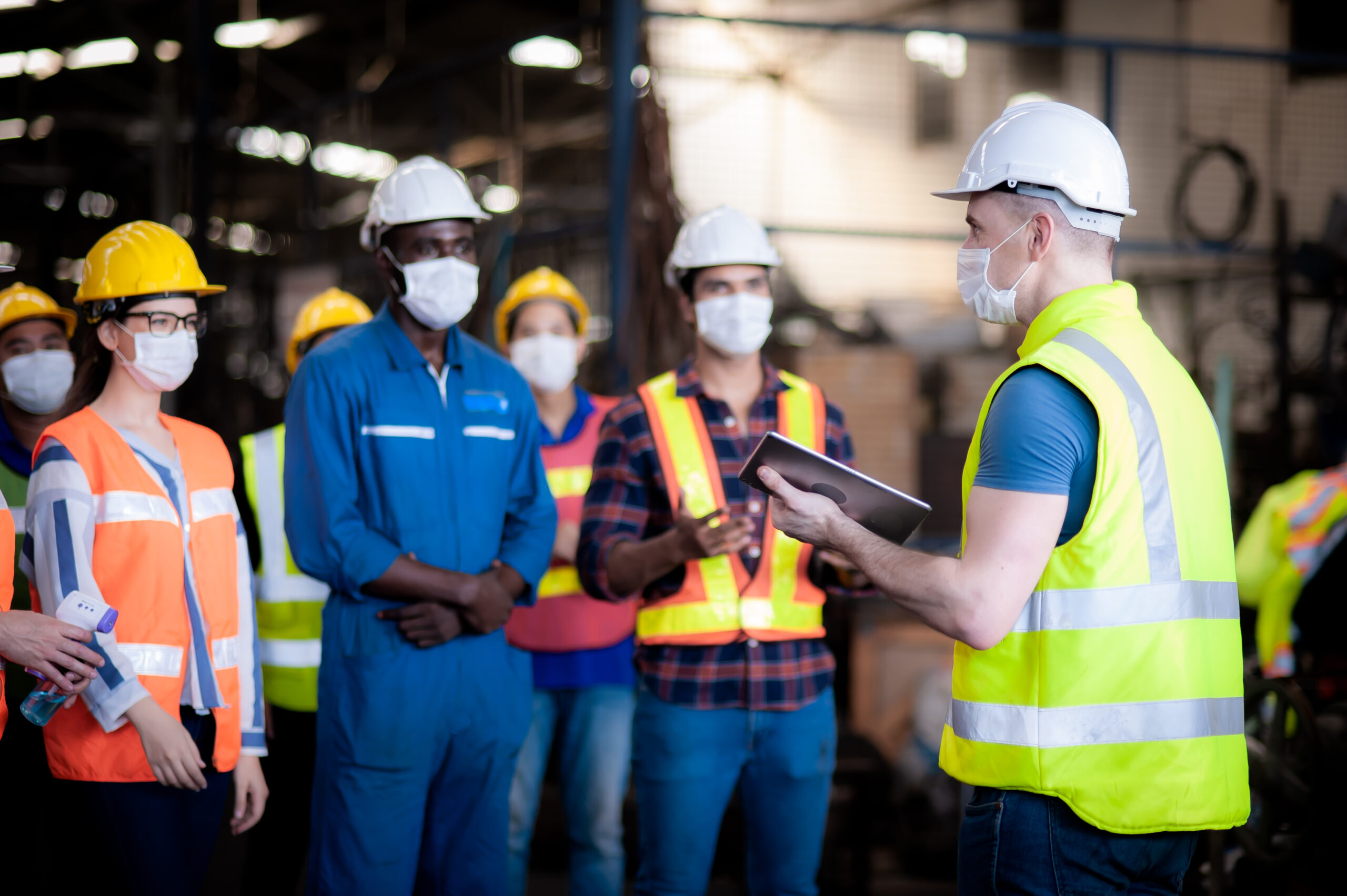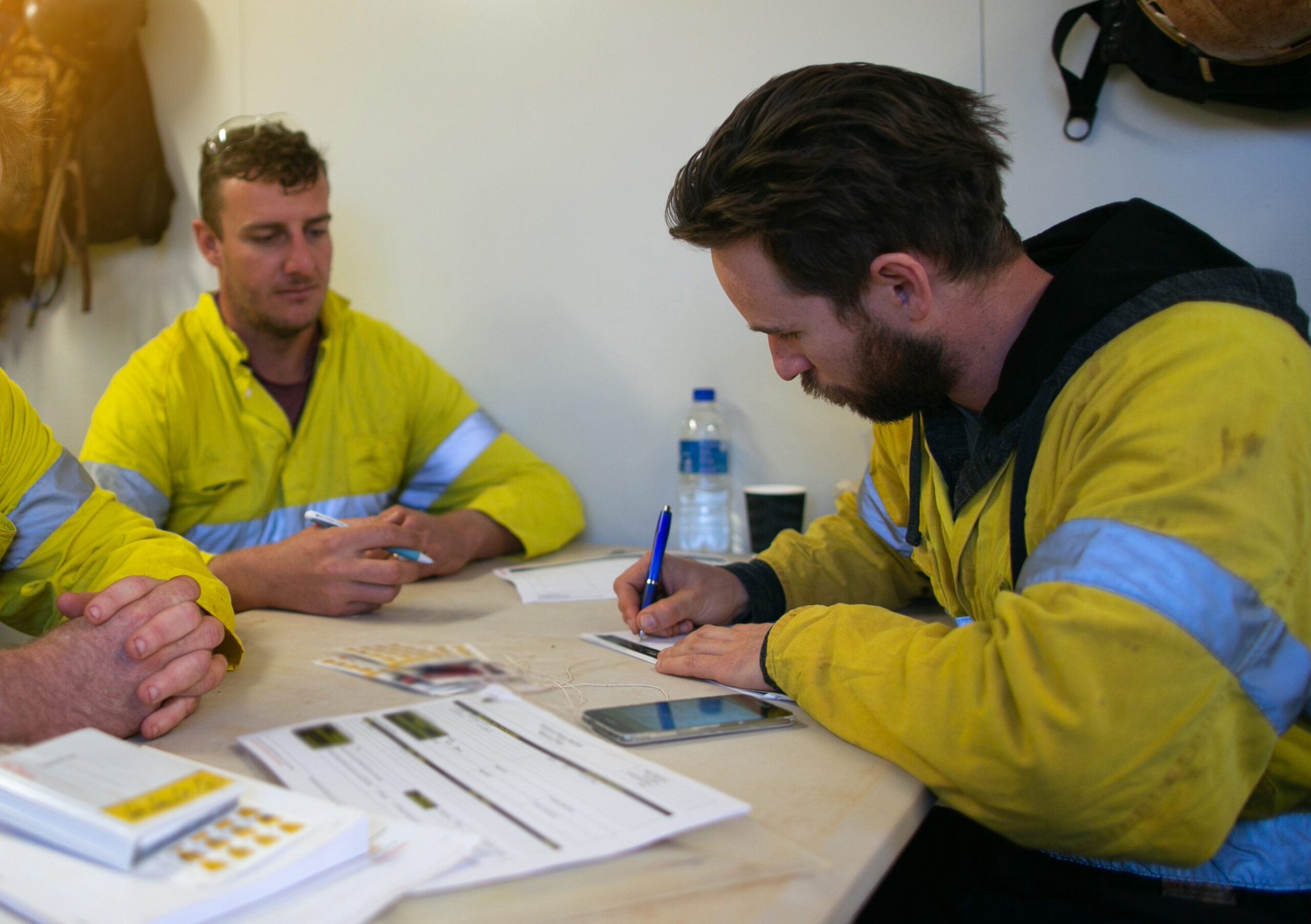Health and safety risk assessments are an essential part of any workplace. They help to identify potential hazards and risks that could cause harm to employees or visitors. The process involves identifying hazards, assessing the risk, and implementing measures to control or eliminate the risk. However, risk assessments are not a one-time process. They need to be monitored and reviewed regularly to ensure that they remain effective.
Monitoring and reviewing health and safety risk assessments is the fifth and final step in the risk assessment process. It involves checking that the control measures put in place are working effectively and identifying any new hazards that may have arisen. Regular monitoring and review help to ensure that the risk assessment remains relevant and up-to-date. It also helps to identify any gaps in the control measures that need to be addressed.
Understanding Health and Safety Risk Assessments
Health and safety risk assessments are a crucial part of ensuring the safety of employees and others in the workplace. The main purpose of a risk assessment is to identify potential hazards and evaluate the risks presented within the workplace. By doing so, the risks can be suitably eliminated, reduced, or controlled.
Hazards and Risks

Hazards are anything that has the potential to cause harm, such as chemicals, machinery, or working at height. Risks are the likelihood of harm occurring and the severity of the harm that could result. The risk assessment process involves identifying all hazards and evaluating the likelihood and severity of the risks associated with each hazard.
The Risk Assessment Process
The risk assessment process involves several steps, including identifying hazards, evaluating risks, and implementing risk controls. The first step is to identify all potential hazards in the workplace. Once hazards are identified, the next step is to evaluate the risks associated with each hazard. This involves assessing the likelihood of harm occurring and the severity of the harm that could result.
Workplace Risk Assessments
Workplace risk assessments are an important aspect of health and safety management. They help to create awareness of hazards and risks, identify who may be at risk, and determine appropriate risk controls. Risk assessments should be reviewed regularly to ensure that they remain up-to-date and relevant.
Risk Controls
Risk controls are the measures put in place to eliminate or reduce the risks associated with hazards. These controls can include physical changes to the workplace, such as installing safety barriers or providing personal protective equipment to employees. Risk controls should be regularly reviewed to ensure that they are effective in reducing the risks associated with hazards.
Risk Analysis
Risk analysis is an important part of the risk assessment process. It involves evaluating the risks associated with each hazard and determining the most appropriate risk controls. Risk analysis should be carried out by a competent person with knowledge and experience in the field of health and safety.
In summary, health and safety risk assessments are a crucial part of ensuring the safety of employees and others in the workplace. By identifying hazards, evaluating risks, and implementing risk controls, the risks associated with potential hazards can be suitably eliminated, reduced, or controlled. Regular review and updating of risk assessments and risk controls are essential to maintain a safe and healthy workplace.
The Importance of Monitoring and Review in Risk Assessments

Monitoring and review are crucial steps in the risk assessment process. It is essential to monitor and review the effectiveness of the implemented control measures to ensure that they are working as intended. Effective monitoring and review enable organizations to identify new hazards, assess the effectiveness of existing controls, and implement additional controls where necessary.
Effective monitoring and review require the establishment of performance measures to evaluate the effectiveness of the implemented control measures. Performance measures should be established for each control measure to ensure that they are working as intended. The performance measures should be reviewed regularly to ensure that they remain relevant and effective.
Monitoring and review should be conducted regularly to ensure that the risk assessment remains relevant and up to date. The frequency of monitoring and review will depend on the level of risk and the complexity of the hazards. Regular monitoring and review ensure that the risk assessment remains relevant and effective.
The monitoring and review process should involve all relevant stakeholders, including employees, managers, and health and safety professionals. Employee feedback is particularly important as they are likely to notice potential health and safety problems or an increase in risk levels. In consulting with employees, employers are likely to hear about health and safety risks that may be overlooked during the initial assessment.
In summary, monitoring and review are essential in the risk assessment process. Effective monitoring and review enable organizations to identify new hazards, assess the effectiveness of existing controls, and implement additional controls where necessary. The monitoring and review process should involve all relevant stakeholders, including employees, managers, and health and safety professionals. Regular monitoring and review ensure that the risk assessment remains relevant and effective.
Key Elements of a Risk Assessment Process

A risk assessment process is a crucial element in ensuring the health and safety of employees and customers. It is a structured method that helps to identify potential hazards and evaluate the risks presented within the workplace. The following are the key elements of a risk assessment process:
Plan
The first step in the risk assessment process is to plan. It involves identifying the scope of the risk assessment, the resources required, and the stakeholders involved. The plan should also include a timeline for the risk assessment process, the roles and responsibilities of the team members, and the methods for collecting and analyzing data.
Do
The next step is to implement the risk assessment plan. This involves collecting data on the potential hazards, assessing the risks associated with each hazard, and identifying control measures to reduce or eliminate the risks. The team should also identify the priority of each risk and determine the appropriate control measures for each risk.
Check
The check step involves reviewing the risk assessment process to ensure that it is effective in identifying potential hazards and assessing the associated risks. The team should also ensure that the control measures identified are appropriate and effective in reducing or eliminating the risks. This step may involve reviewing the data collected, conducting audits, and reviewing the policies and procedures related to risk management.
Act
The final step in the risk assessment process is to act. This involves implementing the control measures identified in the risk assessment process and monitoring their effectiveness. The team should also review the risk assessment process periodically to ensure that it remains effective in identifying potential hazards and assessing the associated risks.
In summary, a risk assessment process is a structured method of ensuring the risks to the health, safety, and wellbeing of employees (and others) are suitably eliminated, reduced, or controlled. It involves planning, implementing, checking, and acting to ensure that the control measures identified are effective in reducing or eliminating the risks. The risk assessment process should be reviewed periodically to ensure that it remains effective in identifying potential hazards and assessing the associated risks.
Roles and Responsibilities in Risk Assessment

Risk assessments are an essential part of maintaining health and safety in the workplace. They involve identifying potential hazards and evaluating the risks associated with them, with the aim of reducing or eliminating those risks. To ensure that risk assessments are carried out effectively, it is important to understand the roles and responsibilities of the various parties involved.
Workers
Workers have a responsibility to cooperate with their employer in the risk assessment process. This includes providing information about any hazards they have identified and reporting any accidents or incidents that occur in the workplace. Workers should also follow any safety procedures or instructions that are put in place as a result of the risk assessment.
Managers and Senior Management
Managers and senior management have a responsibility to ensure that risk assessments are carried out in a timely and effective manner. This includes providing the necessary resources and support for the risk assessment process, such as training for staff and access to relevant information and equipment. They should also ensure that any recommendations or actions arising from the risk assessment are implemented in a timely manner.
Personnel and Employees
Personnel and employees have a responsibility to assist in the risk assessment process by providing information about any hazards they have identified and reporting any accidents or incidents that occur in the workplace. They should also follow any safety procedures or instructions that are put in place as a result of the risk assessment.
Workplace
The workplace itself has a responsibility to ensure that it is safe and free from hazards. This includes carrying out regular inspections and maintenance, providing appropriate safety equipment and facilities, and ensuring that any hazards are identified and addressed in a timely manner.
Overall, effective risk assessment requires cooperation and collaboration between all parties involved. By understanding their roles and responsibilities, everyone can work together to create a safe and healthy workplace.
Incident Reporting and Management

Incident reporting and management is a crucial part of monitoring and reviewing health and safety risk assessments. It is essential to have a system in place to report and manage incidents, accidents, and near misses. This system helps to identify potential hazards and implement corrective actions to prevent future incidents.
An incident is any unplanned event that results in injury, damage to property, or loss of production time. Accidents are a subset of incidents that result in injury or damage to property. Near misses are incidents that could have caused an accident or injury but did not. Reporting all incidents, accidents, and near misses is essential to identify potential hazards and prevent future incidents.
Corrective actions are steps taken to prevent future incidents. They can include changes to policies, procedures, or equipment. Corrective actions are implemented based on the findings of the incident investigation. The incident investigation helps to identify the root cause of the incident and determine the corrective actions needed to prevent future incidents.
Incident reporting and management can be done using various tools, including incident reporting forms, incident tracking software, and incident investigation checklists. These tools help to ensure that all incidents are reported, investigated, and managed effectively.
In conclusion, incident reporting and management is a critical part of monitoring and reviewing health and safety risk assessments. It helps to identify potential hazards and implement corrective actions to prevent future incidents. Reporting all incidents, accidents, and near misses is essential to ensure the safety of employees and prevent future incidents.
Compliance with Legal and Regulatory Requirements

Compliance with legal and regulatory requirements is a critical aspect of health and safety risk assessments. The Management of Health and Safety at Work Regulations (MHSWR) 1999 requires employers to carry out regular risk assessments to ensure compliance with regulatory requirements. Failure to comply with these legal requirements can result in severe penalties, including fines, legal action, and reputational damage.
To ensure compliance with legal and regulatory requirements, employers must identify and assess the risks associated with their operations and implement appropriate measures to control those risks. This process involves reviewing the relevant legislation and regulations, identifying the legal requirements that apply to the organization, and assessing the extent to which the organization complies with those requirements.
Employers must also ensure that their safety policies and procedures are up-to-date and compliant with legal requirements. This includes providing appropriate training and information to employees, conducting regular safety audits, and reviewing and updating safety policies and procedures as necessary.
In addition to complying with legal requirements, employers must also ensure that their risk assessments are conducted in a manner that is consistent with best practices and industry standards. This includes using appropriate risk assessment methodologies, ensuring that risk assessments are conducted by competent persons, and documenting the results of risk assessments in a clear and concise manner.
Overall, compliance with legal and regulatory requirements is a critical aspect of health and safety risk assessments. Employers must ensure that they are aware of the relevant legislation and regulations, assess the extent to which they comply with those requirements, and implement appropriate measures to control the risks associated with their operations.
Tools and Resources for Risk Assessment

When it comes to health and safety risk assessments, there are several tools and resources available to help organizations monitor and review their risk assessments. Here are some of the most commonly used tools and resources:
Resources
There are several resources available to organizations that can help with risk assessments. These include:
- Government agencies: Many government agencies, such as OSHA, provide guidelines and resources to help organizations conduct risk assessments and ensure compliance with regulations.
- Industry associations: Industry associations often provide resources and best practices for conducting risk assessments specific to their industry.
- Consultants: Organizations can also hire consultants who specialize in risk assessments to help them identify and mitigate potential risks.
New Equipment
New equipment can also play a role in risk assessments. When introducing new equipment into the workplace, organizations should conduct a risk assessment to identify any potential hazards and ensure that appropriate safety measures are in place.
Documentation
Documentation is an essential part of risk assessments. Organizations should keep detailed records of their risk assessments, including the hazards identified, the measures taken to mitigate those hazards, and any incidents that occur as a result of those hazards.
Technology
Technology can also be a valuable tool for risk assessments. For example, there are software solutions available that can help organizations identify and assess potential risks, track incidents, and manage safety-related data.
Checklists
Checklists can be an effective tool for ensuring that all potential hazards are identified and addressed in a risk assessment. Organizations can use checklists to ensure that they have covered all relevant areas and that appropriate safety measures are in place.
Personal Protective Equipment
Personal protective equipment (PPE) is often used to mitigate potential hazards identified in a risk assessment. Organizations should ensure that appropriate PPE is provided to employees and that they are trained on how to use it properly.
Overall, there are many tools and resources available to help organizations conduct effective risk assessments and ensure the health and safety of their employees. By utilizing these tools and resources, organizations can identify potential hazards and take appropriate measures to mitigate them, reducing the risk of accidents and injuries in the workplace.
Workplace Inspections and Audits

Workplace inspections and audits are an essential part of monitoring and reviewing health and safety risk assessments. They help identify new or recurring hazards and evaluate the effectiveness of safety and health programs. Inspections and audits can be conducted by internal personnel or external consultants.
Inspections are usually conducted by safety professionals or supervisors who are familiar with the workplace environment. They involve a visual examination of the workplace to identify hazards, unsafe practices, and conditions that may lead to accidents or injuries. Inspections can be scheduled or unscheduled, and they may cover specific areas or the entire workplace.
Audits, on the other hand, are more comprehensive and systematic than inspections. They involve a detailed review of safety policies, procedures, and programs to ensure that they comply with industry standards and regulations. Audits may also include interviews with employees and management to assess their understanding of safety and health issues.
Both inspections and audits generate reports that identify hazards and recommend corrective actions. The reports should be reviewed by management to determine the effectiveness of the corrective actions taken.
Regular workplace inspections and audits are critical to maintaining a safe and healthy work environment. They help prevent accidents, injuries, and illnesses by identifying hazards and implementing corrective actions. By conducting workplace inspections and audits, organizations can demonstrate their commitment to safety and health and ensure compliance with regulatory requirements.
Effective Communication and Feedback Mechanisms
Effective communication is a crucial aspect of risk assessment monitoring and review. It is essential to establish clear communication channels and feedback mechanisms to ensure that all parties involved in the risk assessment process are informed and engaged.
Feedback is a vital component of effective communication. It allows for the identification of potential issues and the implementation of corrective actions. Feedback should be provided in a constructive and actionable manner, focusing on specific areas for improvement.
Risk communication is also an important aspect of effective communication in risk assessment. Risk communication involves the exchange of information about potential risks and the actions necessary to mitigate them. It is essential to ensure that risk communication is clear, concise, and understandable to all parties involved.
To facilitate effective communication and feedback mechanisms, it is recommended to establish regular meetings and check-ins with all parties involved in the risk assessment process. These meetings should provide an opportunity for open discussion and feedback, allowing for the identification of potential issues and the implementation of corrective actions.
Furthermore, it is crucial to establish clear roles and responsibilities for all parties involved in the risk assessment process. This includes identifying who is responsible for providing feedback and who is responsible for implementing corrective actions.
In summary, effective communication and feedback mechanisms are crucial for the successful monitoring and review of health and safety risk assessments. Clear communication channels and feedback mechanisms should be established, and regular meetings and check-ins should be conducted to ensure open discussion and the identification of potential issues. Risk communication should be clear and concise, and roles and responsibilities should be clearly defined for all parties involved.
Adapting to Changes and Continuous Improvement

Health and safety risk assessments are not a one-time process; they need to be continuously monitored, reviewed, and adapted to changes. This is because the workplace environment is constantly evolving, and new risks may emerge over time. By adapting to changes, organizations can ensure that their risk assessments remain relevant and effective in protecting the health and safety of their employees.
One way to adapt to changes is to take a proactive approach to risk assessment. This involves identifying potential risks before they occur and taking steps to mitigate them. By doing so, organizations can prevent accidents and injuries from happening in the first place. Regular check-ins and reviews of the risk assessment can help identify new risks and ensure that existing controls are still effective.
Annual reviews of the risk assessment can also be helpful in identifying areas that need improvement. During these reviews, organizations can evaluate the effectiveness of their current risk controls and identify any gaps or weaknesses. This can help them streamline their risk management processes and improve productivity.
Continuous improvement is another key aspect of adapting to changes. By regularly reviewing and updating their risk assessments, organizations can ensure that they are always up-to-date with the latest best practices and regulations. This can help them stay ahead of emerging risks and ensure that their employees are always protected.
In summary, adapting to changes and continuous improvement are critical components of effective health and safety risk assessment. By taking a proactive approach, conducting regular reviews, and continuously improving their risk management processes, organizations can ensure that their employees remain safe and healthy in the workplace.
Health and Safety Culture in the Workplace
The health and safety culture in the workplace is a crucial aspect of ensuring that safety risks are effectively monitored and reviewed. Safety culture refers to the attitude, beliefs, perceptions, and values that employees share regarding safety in the workplace. It is an important factor in the overall safety performance of an organization.
Organizations must have a commitment to providing resources to address safety concerns and to implement safe care at all times, demonstrating a strong safety culture. Safety policies and standards must be established and communicated clearly to employees to ensure that they understand their roles and responsibilities in maintaining a safe work environment.
A positive safety culture can lead to improved safety performance, increased employee satisfaction, and reduced risk of accidents and injuries. It can also help to reduce the likelihood of safety incidents, by encouraging employees to report safety concerns and hazards promptly.
Effective monitoring and review of safety risk assessments are essential components of a strong safety culture. Regular risk assessments should be carried out to identify hazards and risks present in the workplace. Risk assessments should be reviewed and updated regularly to ensure that they remain relevant and effective in mitigating risks.
Organizations should establish a system for monitoring and reviewing safety risk assessments. This can include regular audits, inspections, and reviews of safety policies and procedures. It is also important to ensure that employees are trained in the proper use of safety equipment and that safety standards are consistently enforced.
By promoting a positive safety culture, organizations can ensure that safety risks are effectively monitored and reviewed, and that employees are empowered to take an active role in maintaining a safe work environment.
Risk Assessment in Different Workplace Scenarios

Risk assessment is an essential process that helps identify potential hazards, assess their likelihood and severity, and implement control measures to eliminate or reduce them. It is crucial to perform risk assessments in different workplace scenarios to ensure the safety and health of workers and visitors. Here are some examples of how risk assessments can be conducted in various workplace scenarios:
Location and Premises
When conducting a risk assessment, it is essential to consider the location and premises of the workplace. For instance, a risk assessment of a construction site will differ from that of an office building. The former will require assessing the risks associated with working at heights, working with heavy machinery, and exposure to hazardous substances, while the latter will require assessing the risks associated with ergonomics, electrical safety, and fire safety.
Quantitative and Objective Assessments
Quantitative and objective assessments involve using data and measurements to evaluate risks. For example, a quantitative assessment can be conducted to determine the level of noise exposure in a workplace. This assessment can be done using sound level meters to measure the decibel levels. The results can then be compared to the permissible exposure limits (PELs) set by the Occupational Safety and Health Administration (OSHA) to determine if the noise levels are within safe levels.
Qualitative Assessments
Qualitative assessments involve identifying potential hazards and assessing their likelihood and severity based on expert judgment and experience. For example, a qualitative assessment can be conducted to identify the risks associated with working in a laboratory. This assessment can involve observing the layout of the laboratory and the types of operations being performed to identify potential hazards such as exposure to chemicals, biological agents, or radiation.
Scenarios and Operational Risks
When conducting a risk assessment, it is essential to consider different scenarios and operational risks. For example, a risk assessment of a manufacturing plant will require assessing the risks associated with different stages of the manufacturing process, such as handling raw materials, processing, and packaging. It will also require assessing the risks associated with different scenarios, such as equipment failure, power outages, or natural disasters.
Threats and Opportunities
Risk assessments can also identify threats and opportunities that can impact the workplace. For example, a risk assessment of a retail store can identify the risks associated with workplace violence, theft, and slip and fall accidents. It can also identify opportunities to improve the safety and health of workers, such as providing ergonomic equipment or implementing safety training programs.
In conclusion, risk assessments are critical to ensuring the safety and health of workers and visitors in different workplace scenarios. By identifying potential hazards, assessing their likelihood and severity, and implementing control measures, workplaces can reduce the risks of accidents, injuries, and illnesses.
